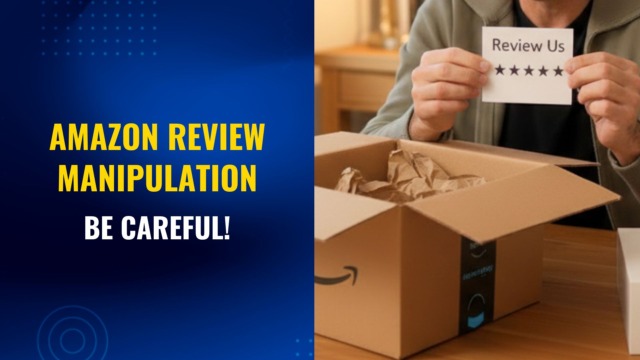
Book a FREE 15-minute consultation with an expert – Book Now
Amazon's Transparency Program: Benefits and Challenges for Sellers

The Amazon Transparency program has been making waves in the e-commerce world, particularly due to a recent surge in seller suspensions. Many sellers are finding themselves unable to list products they’ve sold for years because Amazon claims they lack the required transparency codes. But what exactly is this program, and how does it impact sellers?
Originally a separate company acquired by Amazon, the Transparency program has been integrated into Amazon’s services as a tool to combat counterfeit products. Think of it as a “secret handshake” between brands and Amazon, that can provide a level of protection similar to what sellers might refer to as “gating”, for private label owners.
How Does The Transparency Program Work?
The Transparency program requires manufacturers to apply a unique code, called a transparency code, to each unit of their product. This code is then paired with Amazon’s own code, creating a long, unique identifier for each item. To sell a product that’s part of the Transparency program, sellers must provide this complete code to prove the authenticity of their inventory.
Transparency Program Benefits for Brands
For brands, the Transparency program offers a powerful way to protect their products from counterfeiters. It provides a level of exclusivity and control over who can sell their items on Amazon.
Challenges of the Transparency Program for Resellers
While the program’s intentions are good, it can create significant challenges for legitimate resellers:
- Inventory Issues: Resellers may find themselves with inventory that lacks transparency codes, especially if they purchased stock before a brand entered the program.
- Sudden Policy Changes: Amazon can implement deadlines for transparency codes, leaving sellers scrambling to comply.
- Uneven Implementation: Some brands only apply transparency codes to products sold directly on Amazon (in violation of their Transparency agreement with Amazon), creating issues for resellers who source from other authorized channels.
- Misuse by Brands: Some brands may use the program to unfairly remove competitors or unauthorized resellers, even when they’re selling genuine products.
Fighting Suspensions
If you’re a reseller facing suspension due to lack of transparency codes, there are steps you can take:
- Provide Evidence: Show invoices, receipts, and supply chain documentation to prove the authenticity of your products.
- Argue Pre-Program Inventory: If your inventory predates the brand’s entry into the Transparency program, make this clear in your appeal.
- Know Your Rights: Under the First Sale Doctrine, you have the right to resell genuine products you’ve purchased, regardless of the brand’s wishes.
- Challenge Uneven Implementation: If a brand isn’t consistently using transparency codes across all sales channels, you may have grounds to appeal.
The Bottom Line
The Transparency program is a tool designed to fight counterfeit products, not to create exclusivity or remove legitimate resellers. While it can effectively combat hijackers selling fake goods, it shouldn’t prevent earnest resellers from listing genuine products.
However, navigating the challenges of the Transparency program can be complex. Sellers need to stay informed about the program’s requirements, maintain detailed records of their inventory sources, and be prepared to advocate for their rights when facing potential suspensions.
As with many aspects of selling on Amazon, success with the Transparency program often comes down to understanding the rules, maintaining best practices, and being ready to engage in the appeals process when necessary.
Legal Disclaimer: The articles published on our platform are for informational purposes only and do not constitute legal advice in any form. They are not intended to be a substitute for professional legal counsel. For any legal matters, it is essential to consult with us or a qualified attorney who can provide advice tailored to your specific situation. Reliance on any information provided in these articles is solely at your own risk.
Amazon Brand Registry – Discover for Free if You’re Eligible
Increase Your Chance of Getting a
Trademark to 96%
Subscribe to Our Newsletter
Sign up to receive valuable information on E-Commerce and intellectual property

